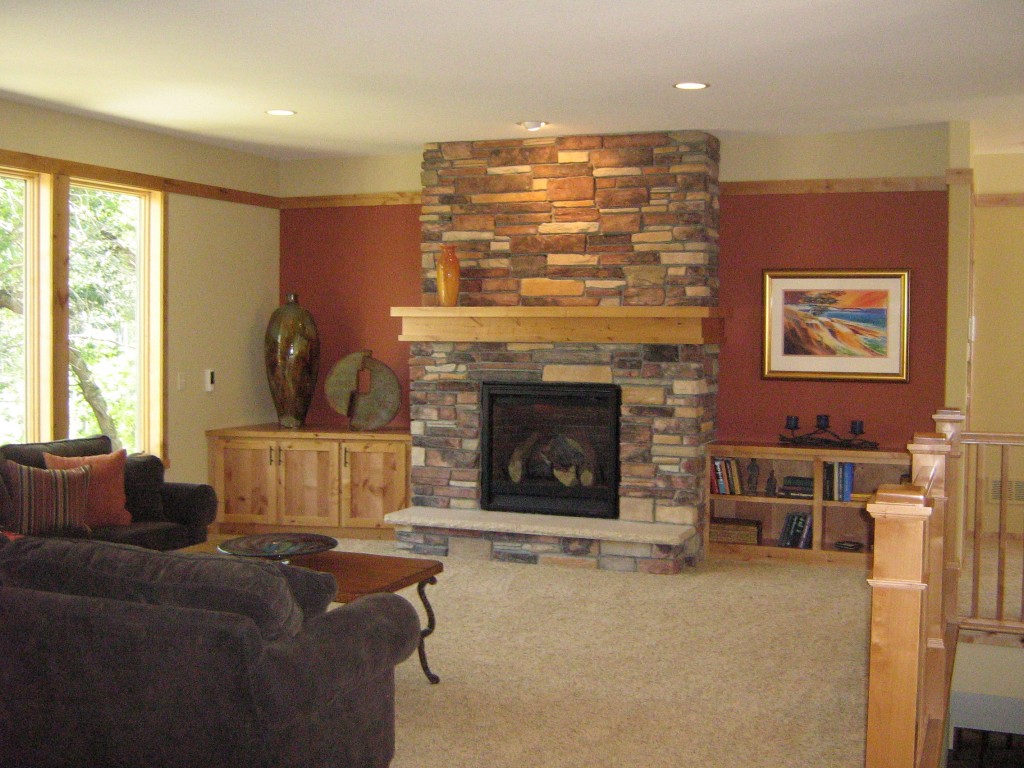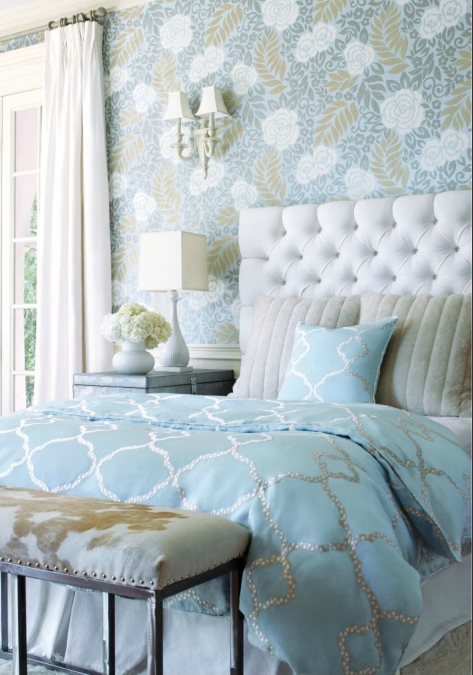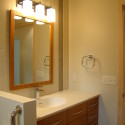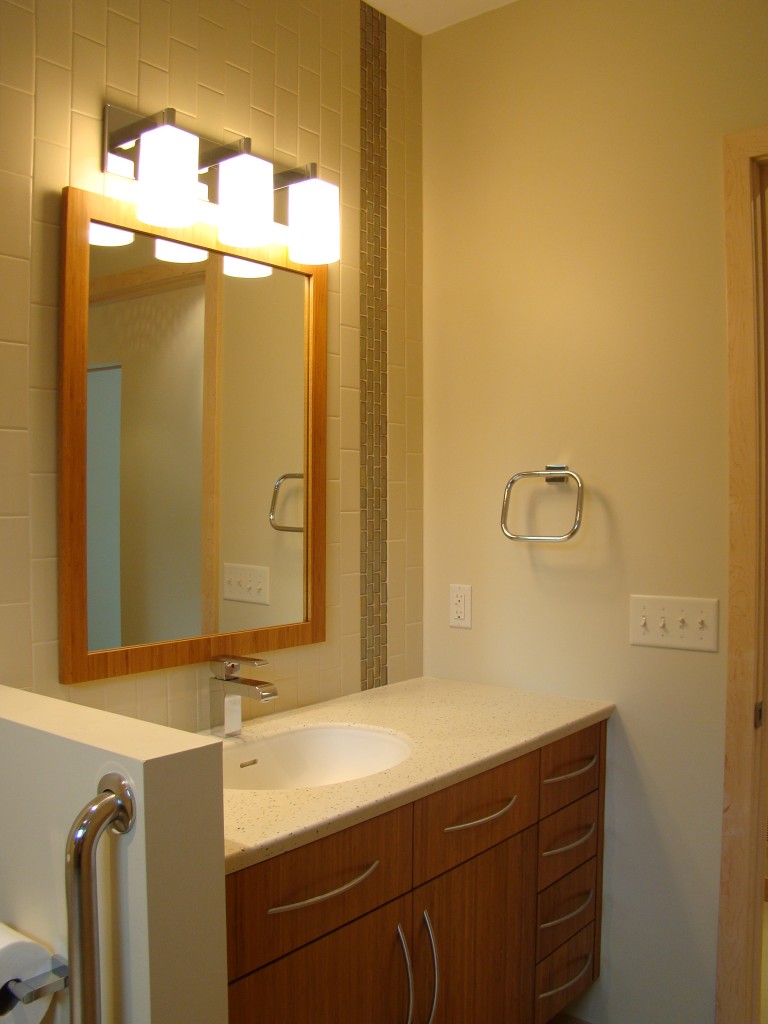Accent walls, once the go-to decorating accent for every room created on design TV, are not always the perfect design solution. In fact, sometimes they are just plain wrong. Read on to find out my tips for deciding if an accent wall is the best solution for your home…
An accent wall is a wall that has been painted a different color or different shade from the rest of the room, or one that has been otherwise changed from the other walls in the space – through the installation of wallpaper, tile, stone, wood or other design feature.
While accent walls can be an inexpensive way to perk up a boring space, they aren’t the right solution for every room. Following are my rules-of-thumb concerning accent walls:

The accent wall in this room highlights the fireplace and was painted in a color found in the fireplace stone.
- Does your room have a wall that should be featured? An accent wall should reinforce the focal point of the room, not compete with it. So, in a room with a fireplace, which is the natural focal point, the accent wall should serve to enhance the fireplace – not take focus away from the fireplace. The accent wall, therefore, should be the wall on which the fireplace is located. Other likely accent walls include walls with large, beautiful windows, walls with other architectural details (exquisite cabinetry, art niches, architectural trim, etc) or the wall behind a bed (in the case of a bedroom). If your room doesn’t have a definite focal point, an accent wall can be used to create one; just make sure the wall you choose makes sense. An accent wall should not be a wall that doesn’t have any business being a focal point in the room. Examples of walls that shouldn’t typically be highlighted include walls leading upstairs or downstairs, walls with numerous doors and other nondescript areas such as hallways.
- Is your room large enough to support an accent wall? Surfaces of the same color tend to make a room look larger and more expansive. So, painting all the walls in a space the same color typically makes that room look bigger. Painting one wall a different color breaks up that continuity, making the space feel chopped up and smaller. In a huge space, this can be the desired effect – to break the room up and keep it from feeling cavernous. In a small powder room, however, it can simply serve to make a small space feel even smaller. Small bedrooms can also be poor candidates for accent walls, while larger spaces such as great rooms or family rooms can offer great options for adding accent walls to your home.

While it may be too much for an entire room, this patterned wallpaper from Thibaut makes a beautiful accent wall behind the bed.
- Does your room need additional color, pattern or texture? In spaces with numerous solid surfaces – painted walls, solid color carpet, plain ceiling, solid-color furniture – the addition of pattern and texture may be just the shot in the arm you need to inject life into your space. In this case, consider adding wallpaper, architectural stone, slate tile, wood planks or other materials to your accent wall. While this is a more permanent accent wall solution, the addition of textured or patterned wall materials enhances the focal point of any room – provided you choose the right wall to accent (see rule #1).
- Remember that dark colors on a wall will tend to bring that wall into the room visually. Again, this can be a positive effect in some cases. Painting the end wall in a long, narrow space a dark color will serve to shorten the space visually, as the dark paint will make the wall feel closer to you. However, the effect can be overwhelming in a narrow room if you paint the wrong wall in a dark color, making it feel even narrower than before!
- If you choose to paint an accent wall in a darker shade of the color you are using on the remaining walls, be sure that your accent color is at least 2 shades darker than the original hue. If you choose a color too close to your main wall color, your eye will likely not decipher the difference due to natural shading and shadows in the room.
- If you would rather paint an accent wall in a completely different color than what you have on the remaining walls, look to the decorative accents in the room for cues. You could use the fabric on a decorative pillow, a color in your area rug or a hue from a favorite painting as inspiration for the color of your accent wall.
- Remember, too, that design rules are meant to be broken. If you aren’t sure whether an accent wall will be right for you, give it a try! Start with paint as a test run if you plan to install wood, stone or another permanent material on your accent wall. Paint the accent wall a hue similar to the material you will install to give you a good idea of how the new wall will change the look of the room. It’s much easier to change a coat of paint that to change a permanent installation!
What do you think about accent walls? Let us know how you have created style in your home with accent walls – or without!
Pin It
